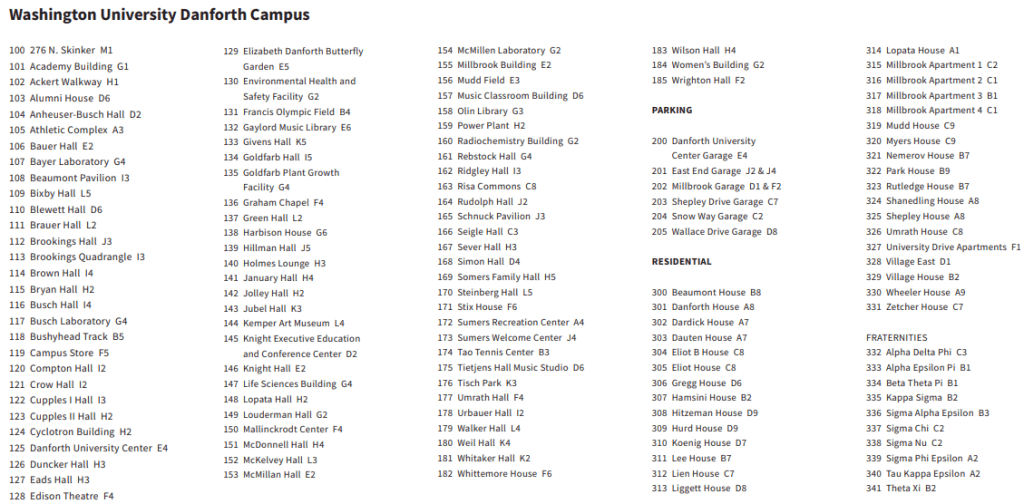American Arborvitae
Arbor Walk #62, Treekeeper ID #4666

The American Arborvitae is most prevalent in eastern and central Canada, and found in Northern Illinois, Ohio, and New York as well as scattered populations further south. St. Louis is near the southern end of the tree’s range, and it benefits from being in a slightly shadier location than they would prefer in their northern ranges.
The tree is in the cypress family, Cupressaceae, and is also referred to as Eastern or Northern White Cedar (but is not a true cedar). Arborvitae translates to “tree of life” in Latin and was given to this tree by early French settlers to North America after learning from the Native Americans that the tree’s foliage could be used to treat scurvy. The essential oil of American Arborvitae has also been found to have antimicrobial, antioxidant, antitumor, antidiabetic, antifungal, and antipyretic properties.


GPS Coordinates
N/A
Percent Concrete
N/A
Distance to Buildings
| Year | Close Building #1 | Close Building #2 | Close Building #3 |
|---|---|---|---|
| 2020 | Whittemore House, 41.31 m | Stix International House, 67.52 m | 6465 Ellenwood Ave., 29.20 m |
Distance to Other Species
| Year | Close Species #1 | Close Species # 2 | Close Species # 3 |
|---|---|---|---|
| 2020 | American Arborvitae, 3.24 m | American Arborvitae, 4.55 m | Southern Magnolia, 9.82 m |
Standard Measurements
| Year | Height (m) | DBH (cm) | Crown Diameter N-S (m) | Crown Diameter E-W (m) | Average Crown Diameter (m) |
|---|---|---|---|---|---|
| 2020 | 16.42 | 36.3 | 4.32 | 8.11 | 6.215 |
| 2023 | 19.92 | 38.7 | 5.51 | 8.7 | 7.105 |
Nests and Pests
| Year | Description |
|---|---|
| 2020 | Heavy woodpecker activity, which indicates insect infestation Small black bugs crawling all over the bark, <2mm in length and probably beetle larvae Small insect bore-holes visible throughout trunk, especially old wounds with exposed wood Branch blight Thick old vine creeping up trunk is now dead but has altered the trunk’s growth Heavy green and grey lichen, moss, algae, and mildew |
Leaf Identification
The leaves of the American Arborvitae are scale-like and aromatic. They appear in flattened sprays and are a yellowish-green to green. As an evergreen, the leaves stay attached all year. A structure called a branchlet blends in with the leaves and is further explained in the Twig and Bud Identification section.
Twig and Bud Identification
The twigs of the American Arborvitae are green when young eventually turning a grayish-brown. The American Arborvitae also has a special kind of twig called a branchlet. The branchlets are green, scale-like, and hold the actual leaves. It is hard to visually determine what is a branchlet and what is a leaf. Sometimes the twigs are called persistent branchlets, and the branchlets are called deciduous branchlets. The buds of the actual leaves are too tiny to see and are completely covered by leaves.
Bark Identification
The Eastern Arborvitae has grayish-brown to reddish-brown bark which will exfoliate on mature branches and the trunk of older trees. It forms long, vertical furrows.
Cone Identification
The mature cone of the American Arborvitae are oval, reddish-brown open cones with 6 to 12 overlapping, thin scales. Each scale bears 1 to 2 small seeds with a pair of narrow lateral wings. The cones have a small spine at the tip. The staminate cones are small, inconspicuous, and are located at the tips of the twigs. The ovulate cones are solitary, around 1/2″ long, egg-shaped, and green. They also have several small, undeveloped wings.
Cedar ID Tips
- The American Arborvitae is closely related to North American cedars, and can also be mistaken for other members of the cypress family with scale-like leaves, such as junipers. Most cedars are confined to the West Coast, but junipers are more broadly distributed across the continent.
- When cones are on the tree, they can be very useful in identifying a cedar. Unlike cedars, the cones of junipers appear like larger, firmer blueberries (although inedible). Cedar cones are brown, open, and layered. Cypress cones are closed, which distinguishes them from the American Arborvitae. The American Arborvitae is the only cypress member in central North America to have an open, brown cone when mature.
- If the tree is cultivated, it may be tricky to identify the American Arborvitae from Western cedars or the Atlantic White-cedar. The American Arborvitae does have its leaves arranged in flat, upright or horizontal sprays. Most other cedars will have three-dimensional leaf arrangements, or have hanging sprays if flat.








